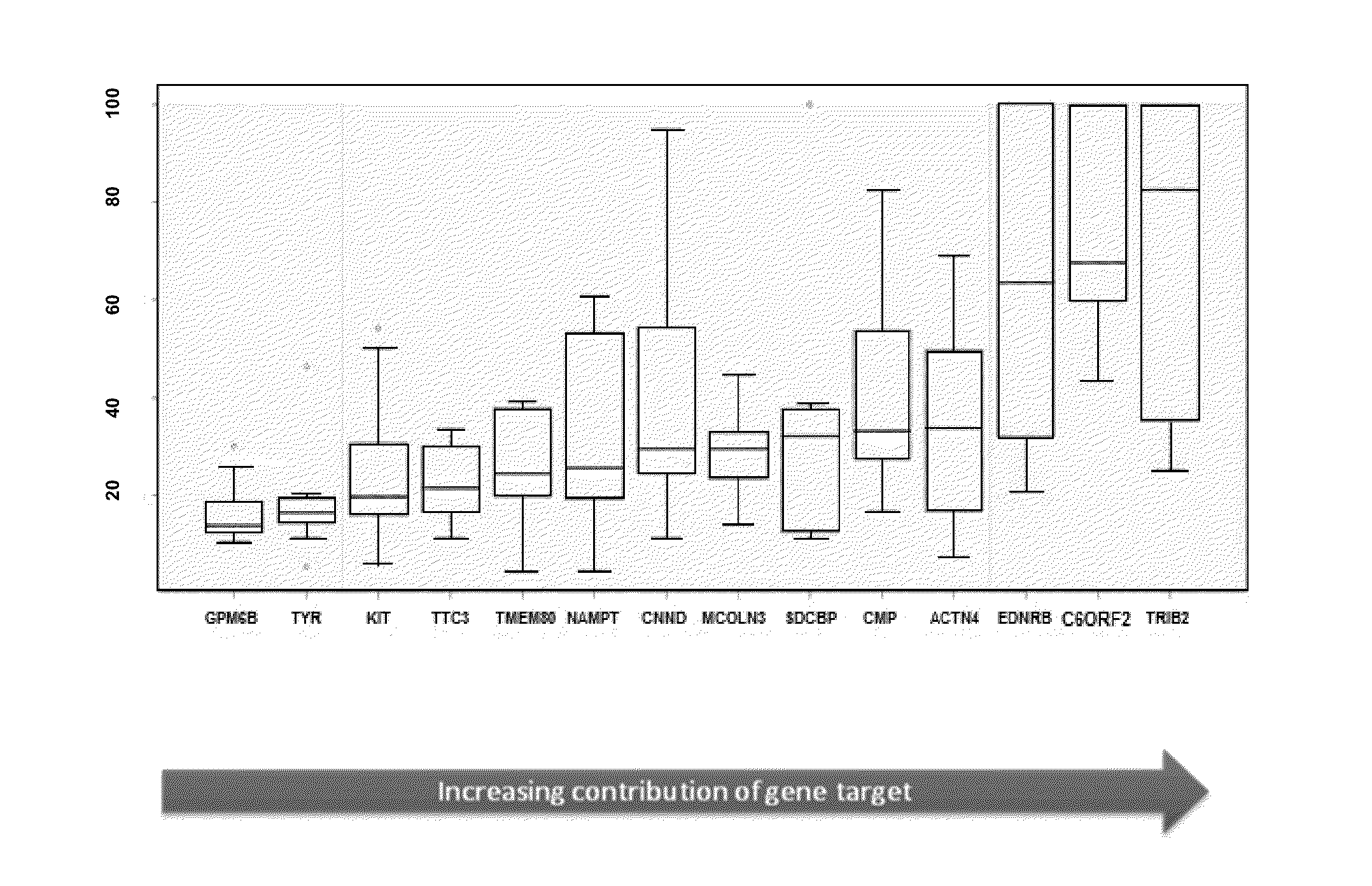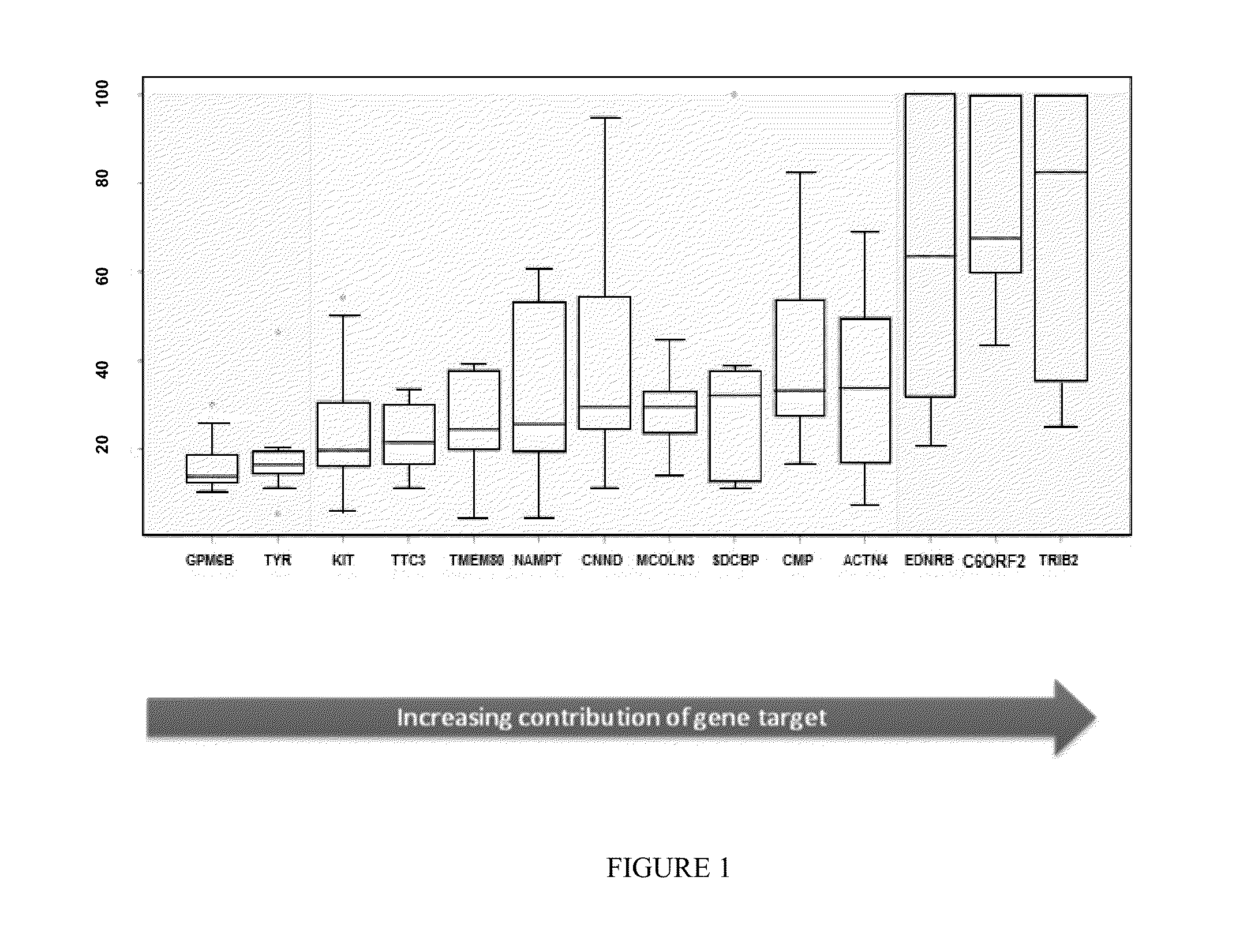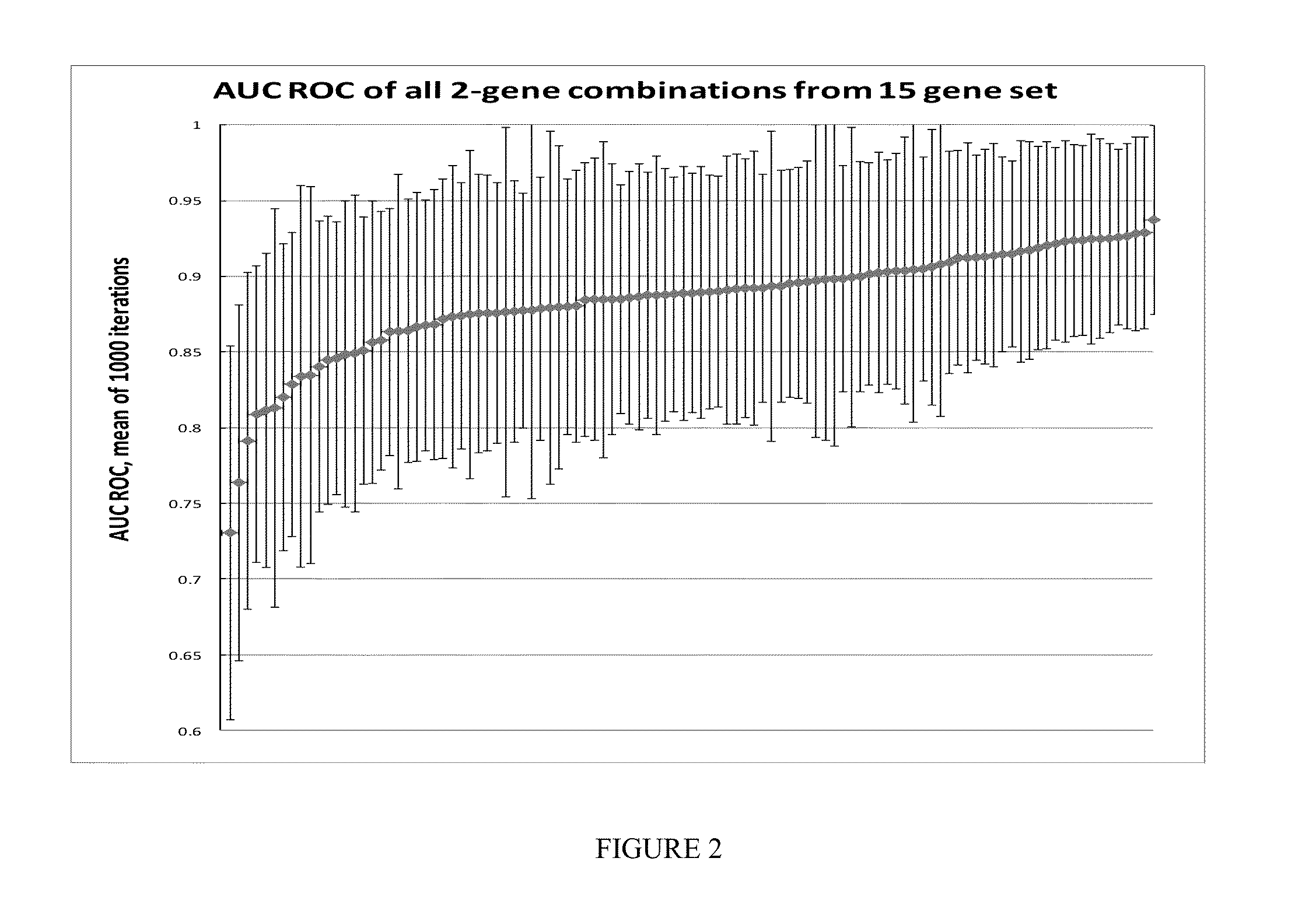Diagnosis of melanoma by nucleic acid analysis
a nucleic acid analysis and melanoma technology, applied in the field of melanoma diagnosis by nucleic acid analysis, can solve the problems of dermatologists' limitations, missed diagnosis of some melanomas, and difficult procedure for diagnosing melanoma, so as to improve the ability of clinicians to identify, high accuracy, and high sensitivity of methods
- Summary
- Abstract
- Description
- Claims
- Application Information
AI Technical Summary
Benefits of technology
Problems solved by technology
Method used
Image
Examples
example 1
Tape Stripping to Recover Nucleic Acids from Pigmented Lesions
[0160]The following procedure was used to recover nucleic acids from pigmented lesions and / or skin suspected of melanoma of a subject. In contrast to normal skin, lesional skin should have a preoperative biopsy diameter of greater than or equal to about 6 mm, but less than that of the tape disc. Multiple lesions must be at least about 4 mm apart. The area of tape that touches the lesion should be generously demarcated on the tape with an insoluble ink pen so that this area may be cut away from the surrounding tape at the laboratory as part of the RNA extraction procedure.
[0161]As above, tapes were handled with gloved hands at all times. The site is shaved, if necessary, to remove non-vellus hairs. The site is then cleansed with an alcohol wipe (70% isopropyl alcohol). The site is then air-dried completely before application of the tape. It is recommended to approximately 2 minutes to ensure the site is completely dry befo...
example 2
RNA Quantitation and Profiling
[0165]The study was divided into two separate phases, a sample collection and characterization phase (phase 1) and an RNA profiling phase (phase 2). In phase 1 the tape stripped specimens and biopsied sample collections were performed by the principal investigator or trained individuals delegated by the principal investigator to obtain the biopsy sample at various sites. All biopsies are subject to standard histopathologic analysis. The RNA profiling phase (Phase 2), includes, but is not limited to RNA purification and hybridization to DNA microarrays for gene expression profiling.
[0166]Materials and reagents. Adhesive tape was purchased from Adhesives Research (Glen Rock, Pa.) in bulk rolls. These rolls were custom fabricated into small circular discs, 17 millimeters in diameter, by Diagnostic Laminations Engineering (Oceanside, Calif.). Human spleen total RNA was purchased from Ambion (catalogue #7970; Austin, Tex.). RNeasy RNA extraction kit was purc...
example 3
Assessment of Performance of Multi-Gene Biomarker for Melanoma Detection
Custom TaqMan OpenArray (OA) qPCR Plate (See Figure to the Right)
[0179]The OpenArray real-time PCR system (Life Technologies, Carlsbad, Calif.) was chosen for investigation. Each OA contained 48 sub-arrays (4×12). Each sub-array contained 18 target genes in triplicate, including genes procured from discovery studies to generate a melanoma classifier, and 3 internal genes (Wachsman et al., Brit. J. Dermatol 164:797 [2011]).
[0180]Latin Square Experimental Design and Method (See FIG. 3)
[0181]13 cloned human genes were used, including: ACTN4, B2M, LINC00518, CMIP, CNN2, EDNRB, GPM6B, KIT, MCOLN3, PRAME, SDCBP, TMEM80 and TRIB2.
[0182]Each of the 13 genes were pooled into groups and diluted to copies of 0, 64, 256, 1024, 4096, 1.6E+04, 6.6E+04, 2.6E+05, 1.0E+06, 4.2E+06, 1.7E+07, 6.7E+07 and 2.7E+08.
[0183]In every qPCR experiment, 13 groups of genes in 13 different copies were assayed in triplicate in the presence of ...
PUM
| Property | Measurement | Unit |
|---|---|---|
| depth | aaaaa | aaaaa |
| median survival time | aaaaa | aaaaa |
| median survival time | aaaaa | aaaaa |
Abstract
Description
Claims
Application Information
 Login to View More
Login to View More - R&D
- Intellectual Property
- Life Sciences
- Materials
- Tech Scout
- Unparalleled Data Quality
- Higher Quality Content
- 60% Fewer Hallucinations
Browse by: Latest US Patents, China's latest patents, Technical Efficacy Thesaurus, Application Domain, Technology Topic, Popular Technical Reports.
© 2025 PatSnap. All rights reserved.Legal|Privacy policy|Modern Slavery Act Transparency Statement|Sitemap|About US| Contact US: help@patsnap.com



